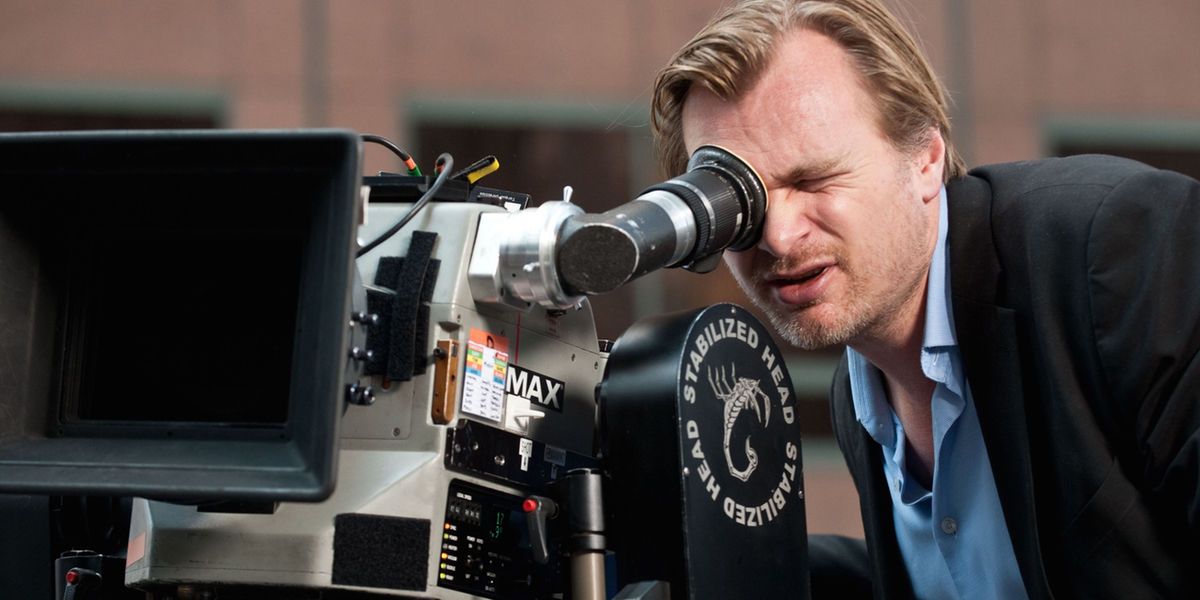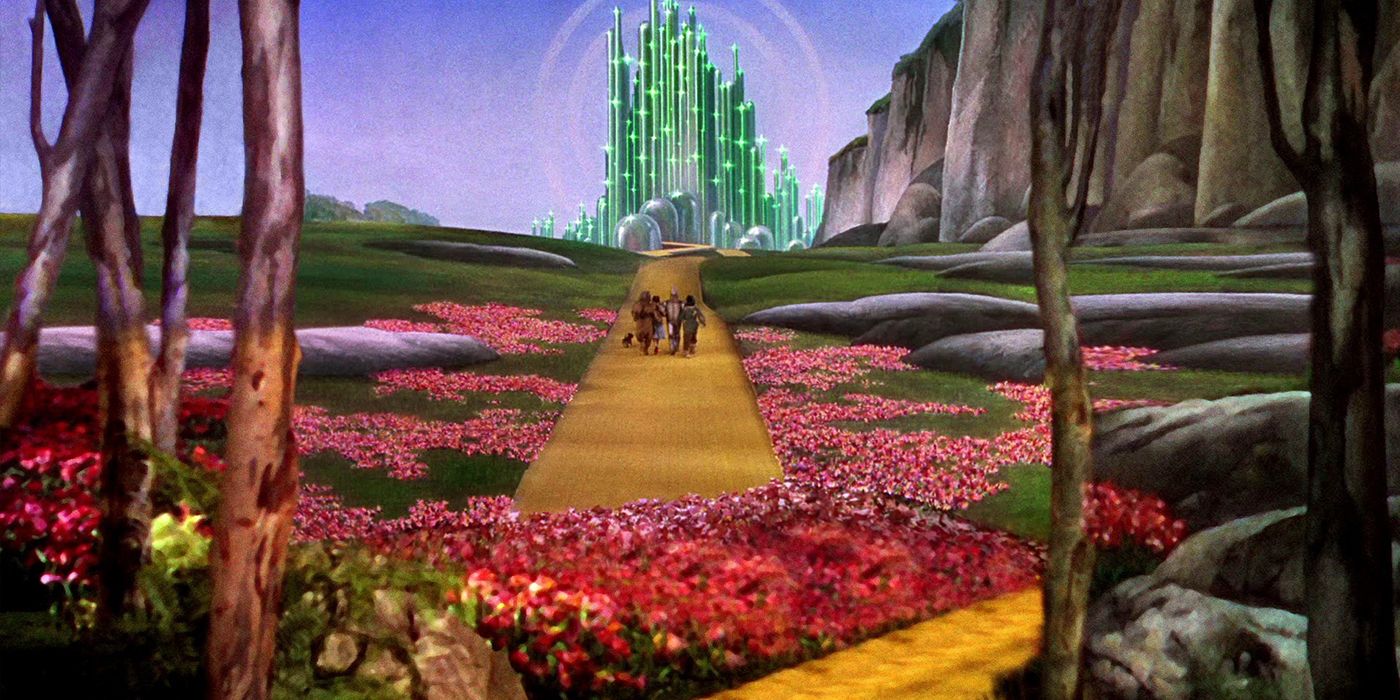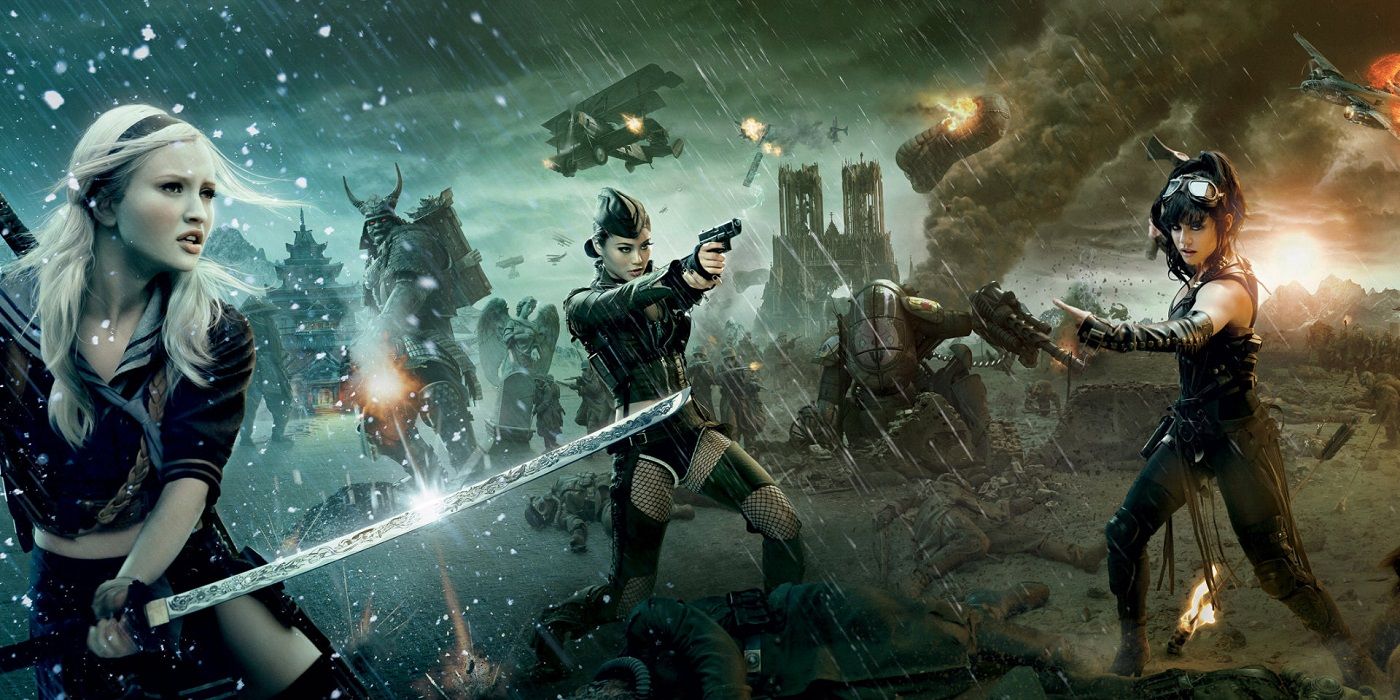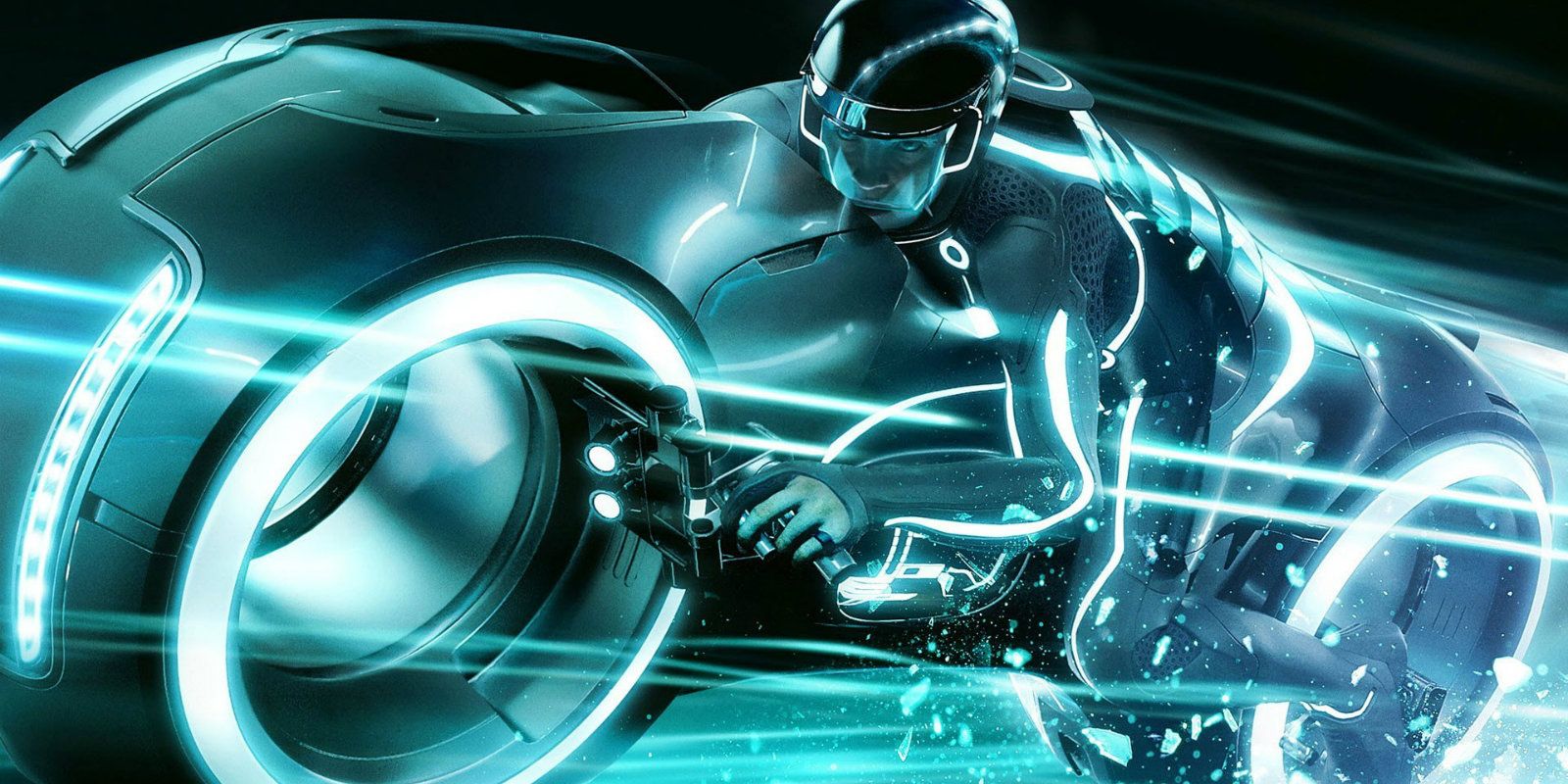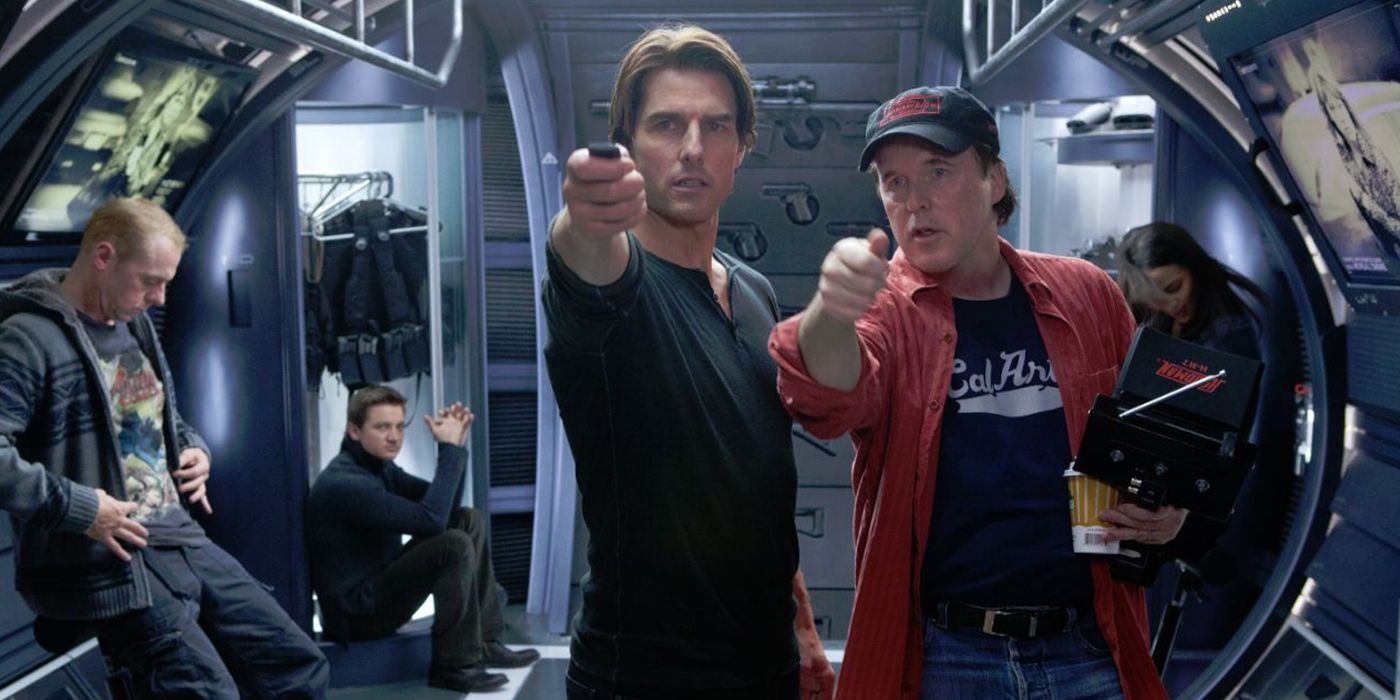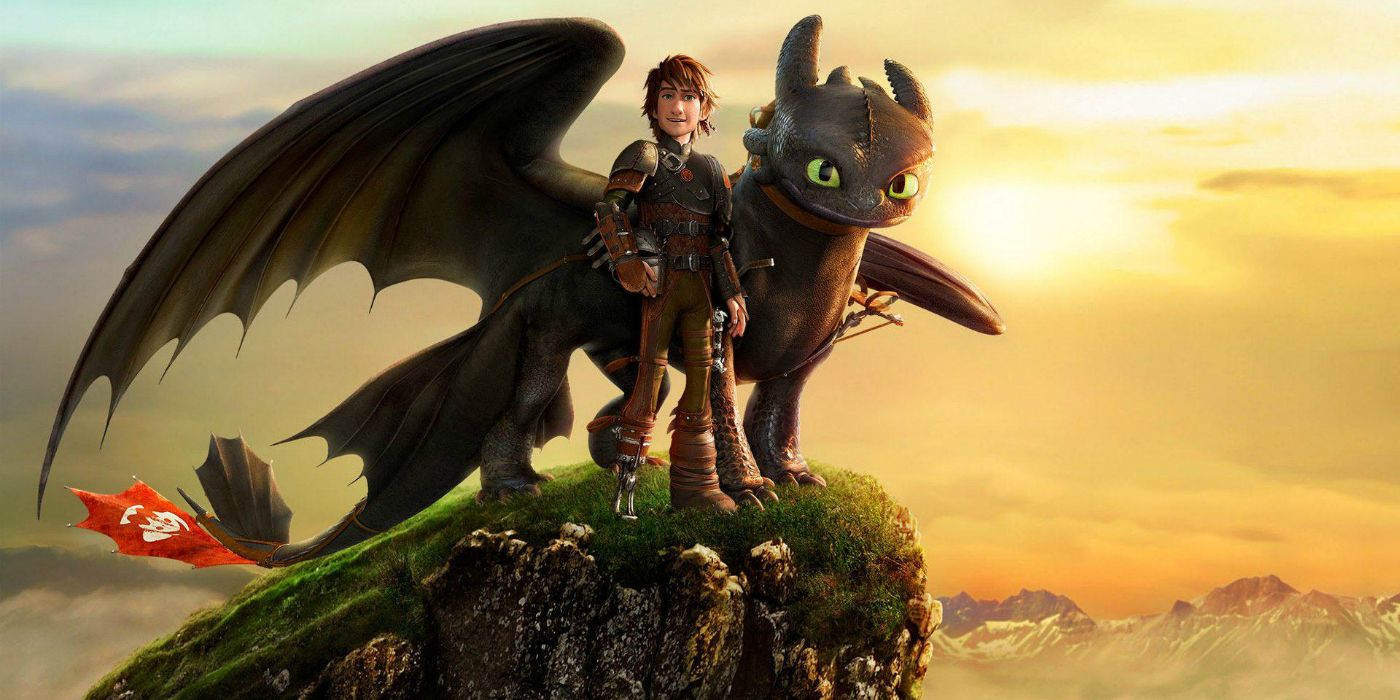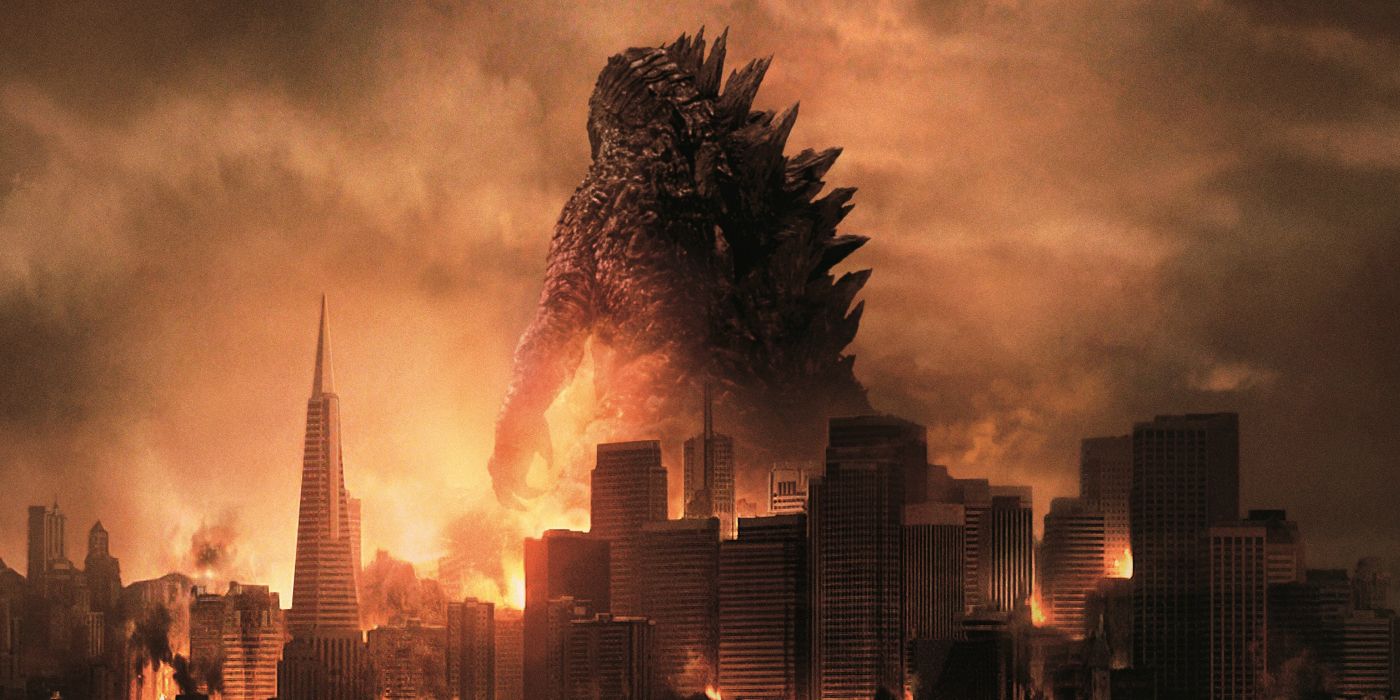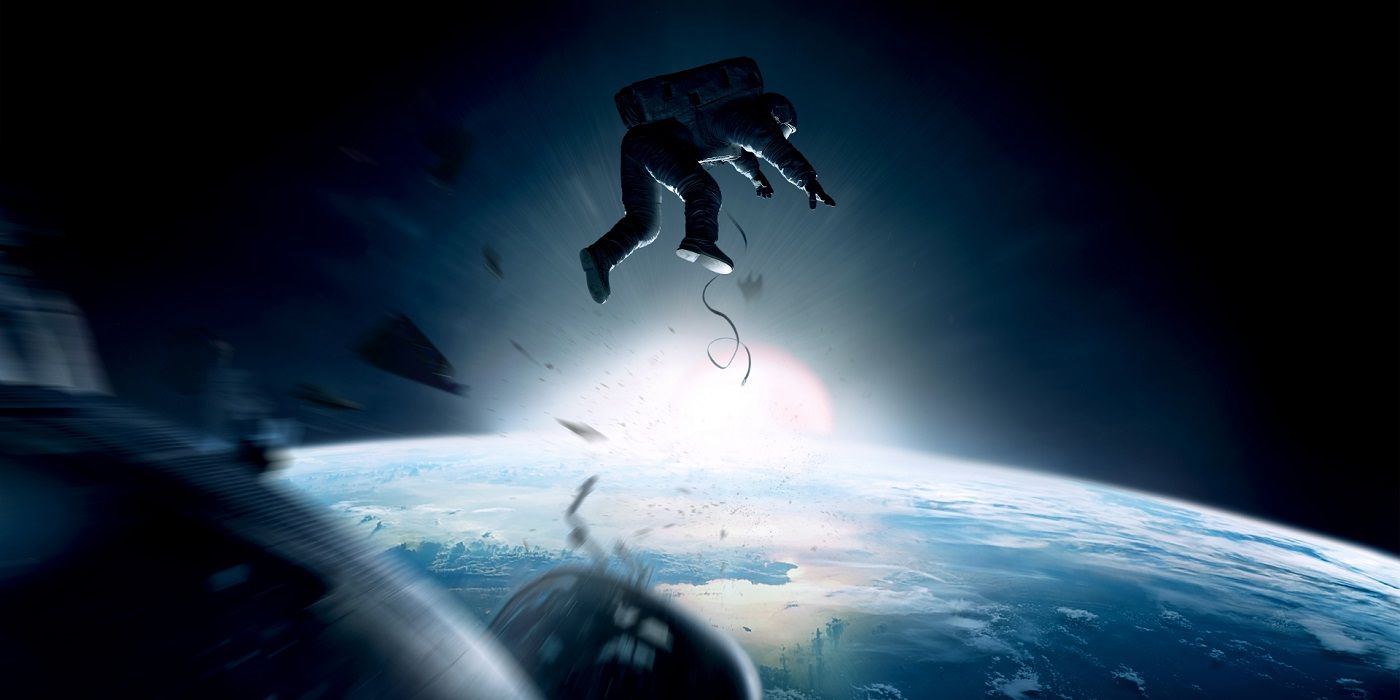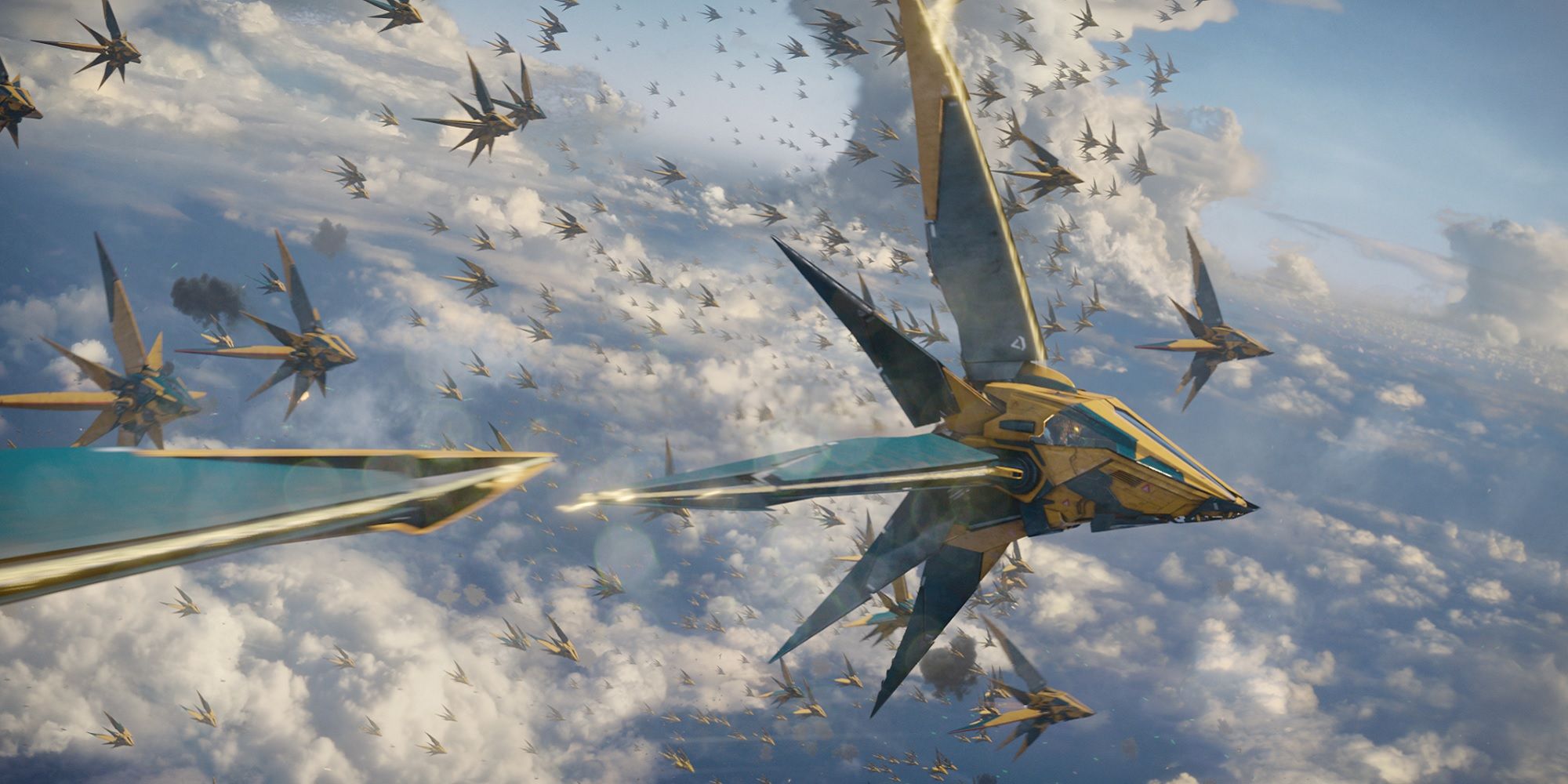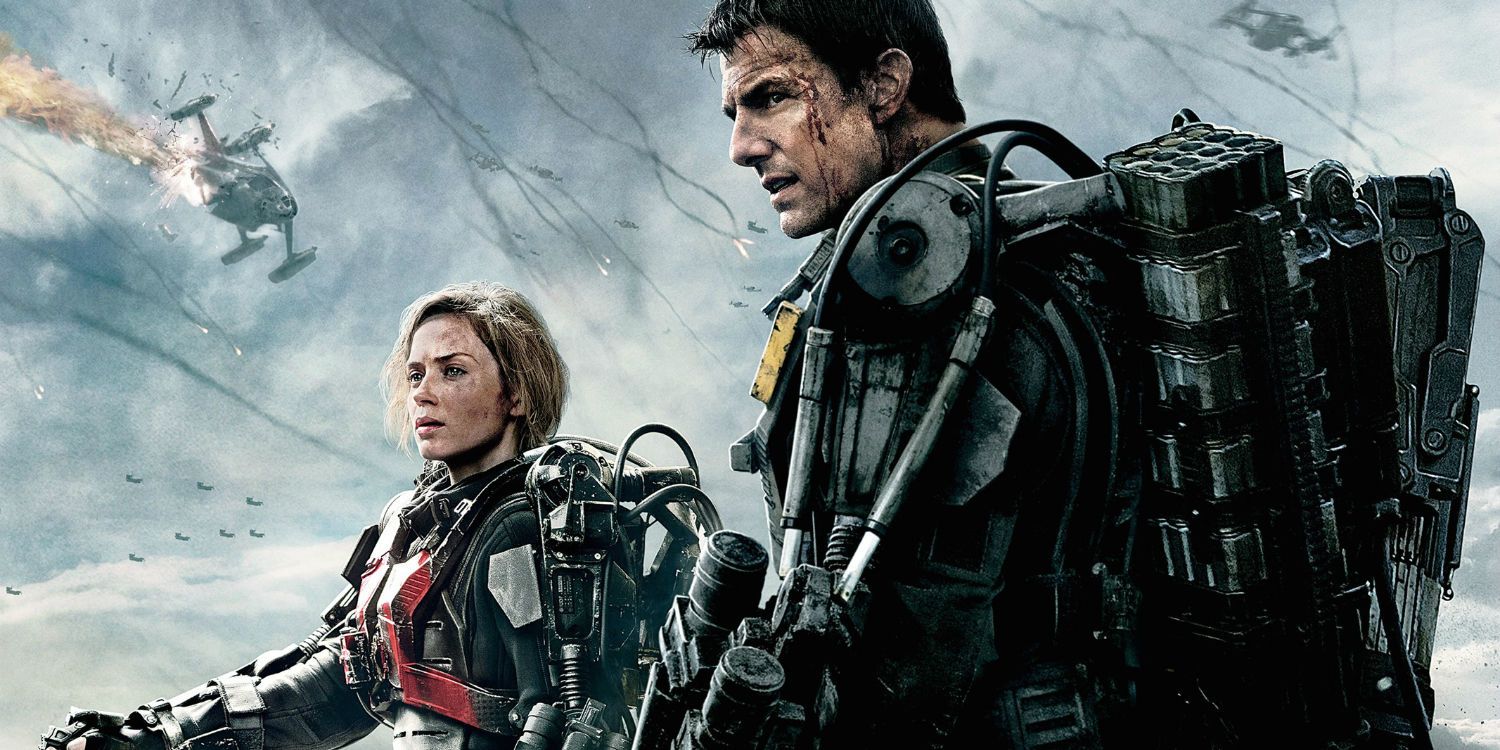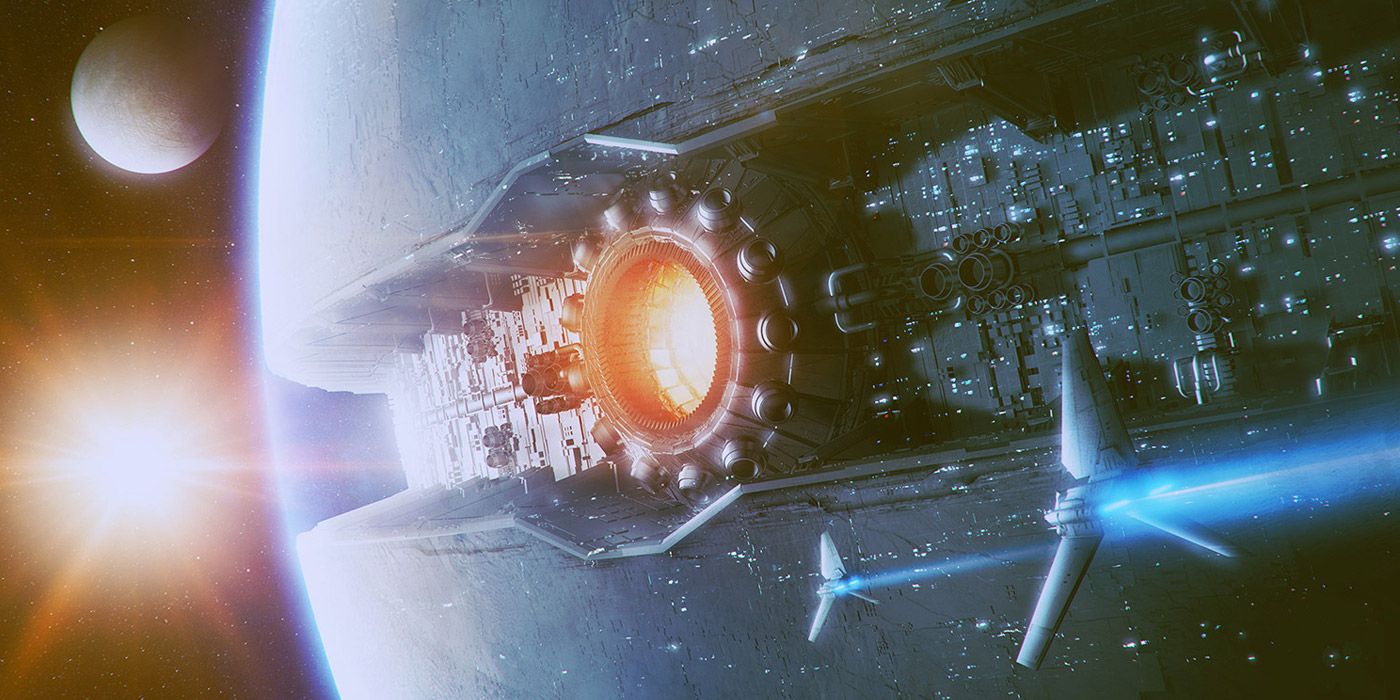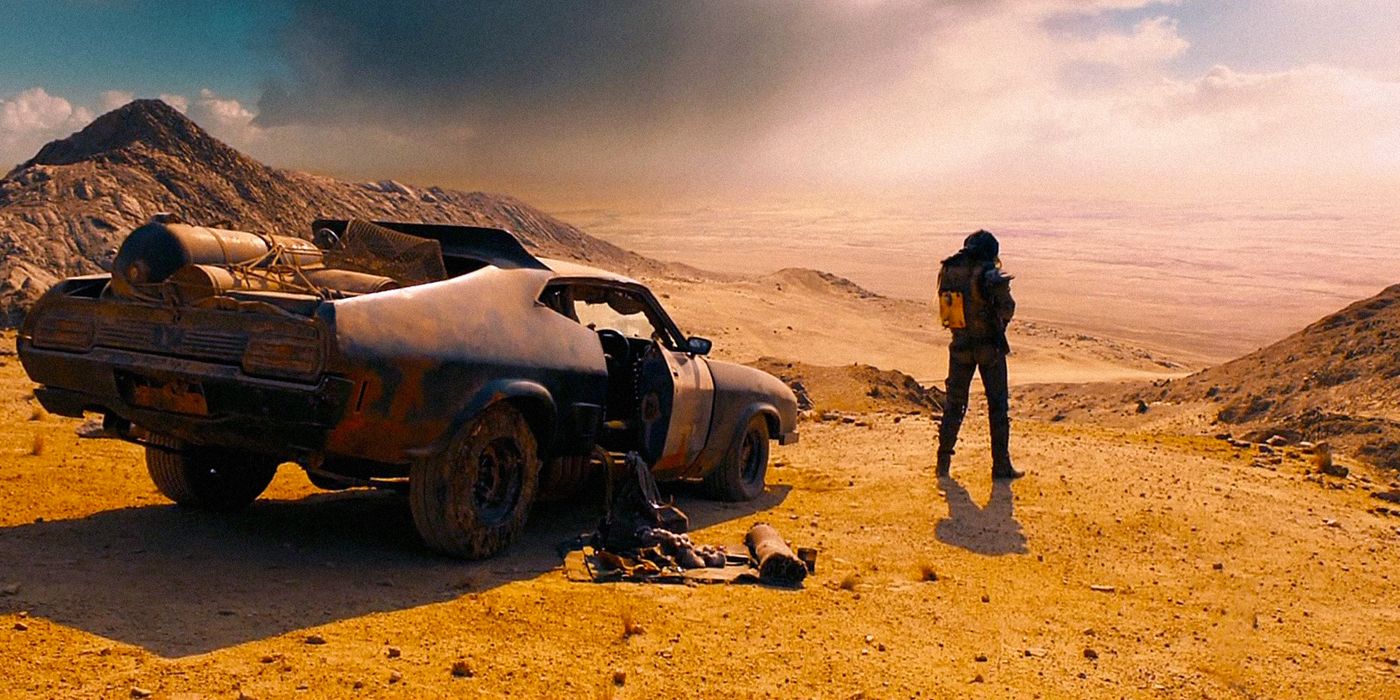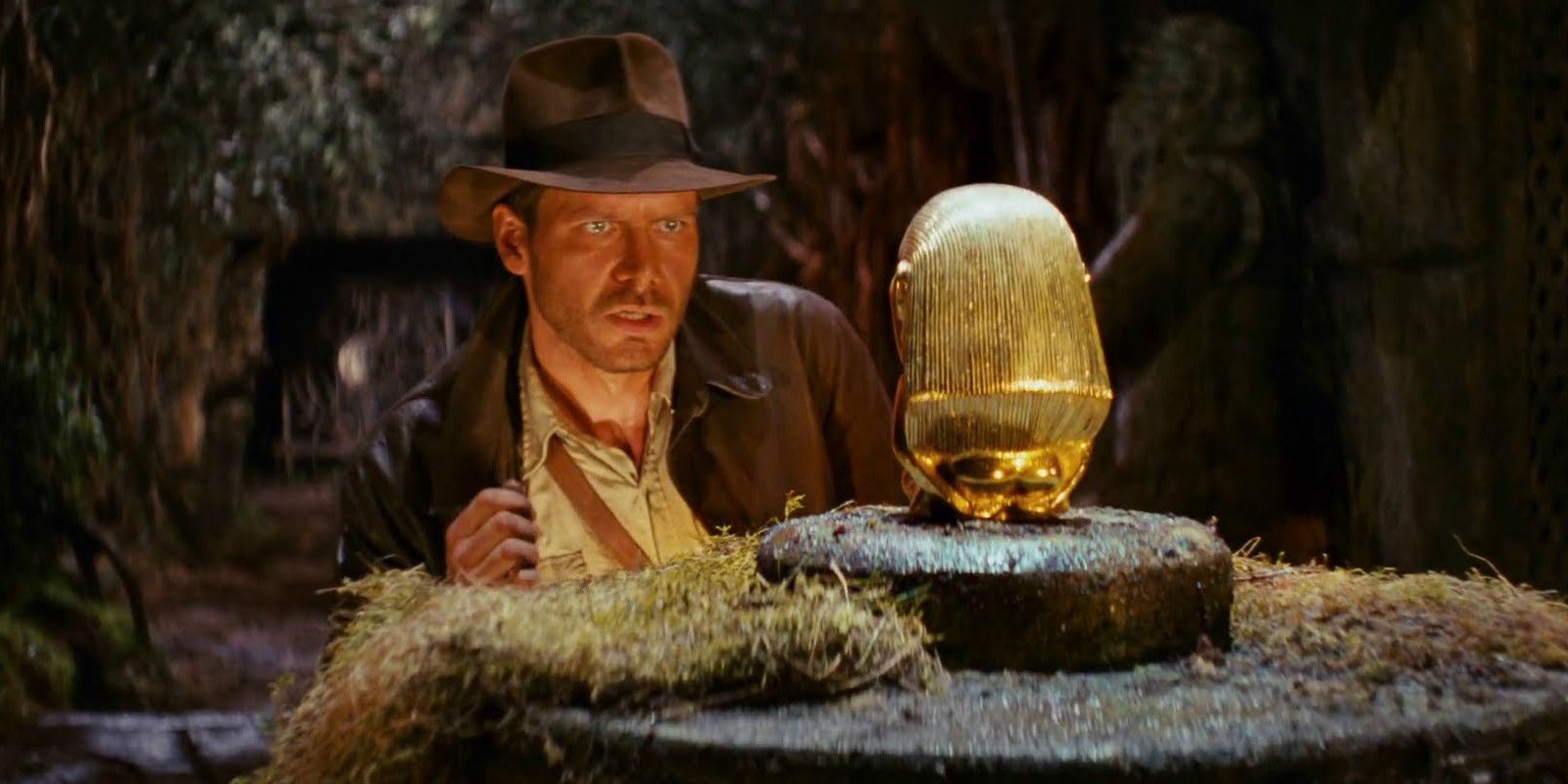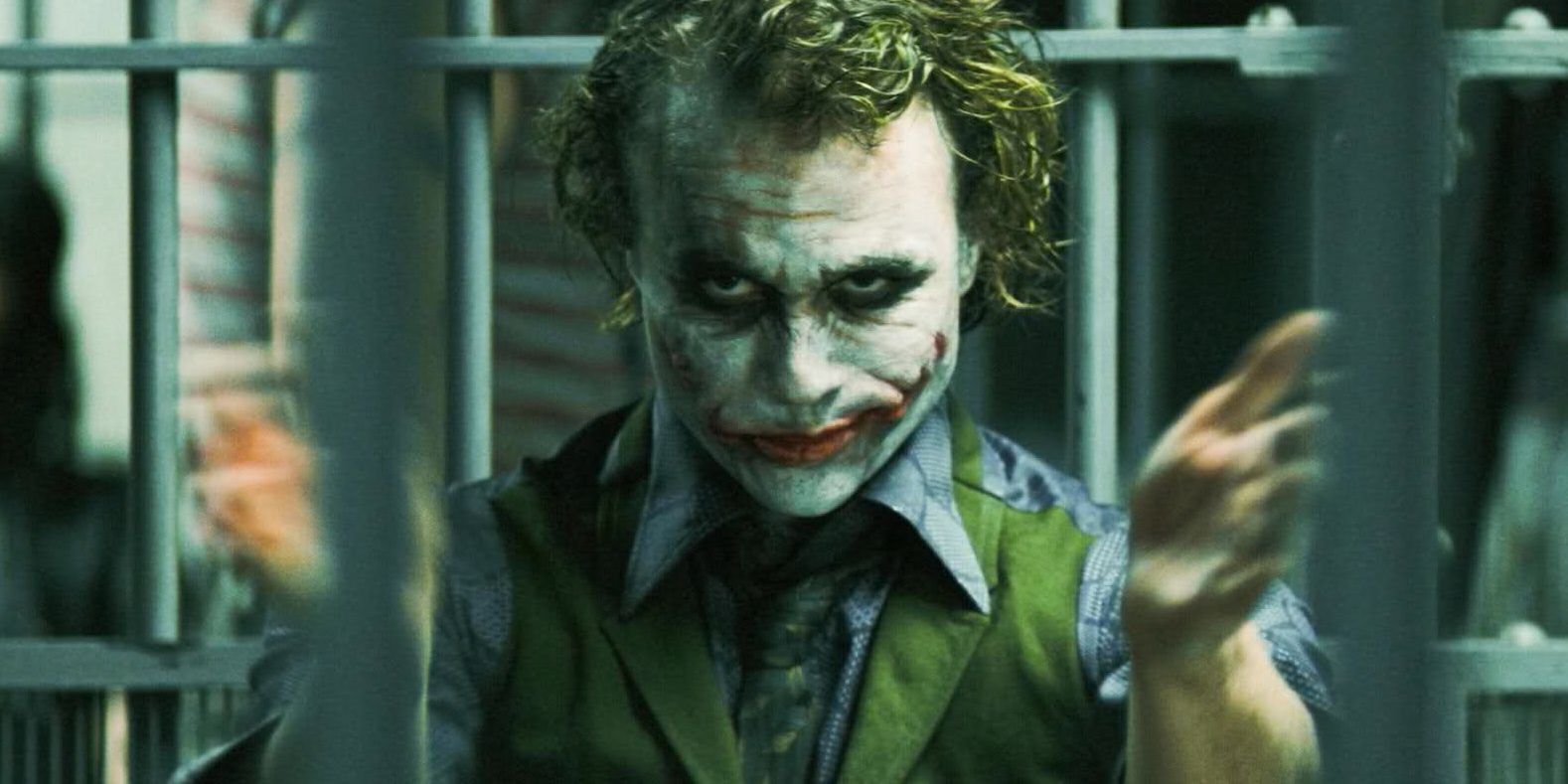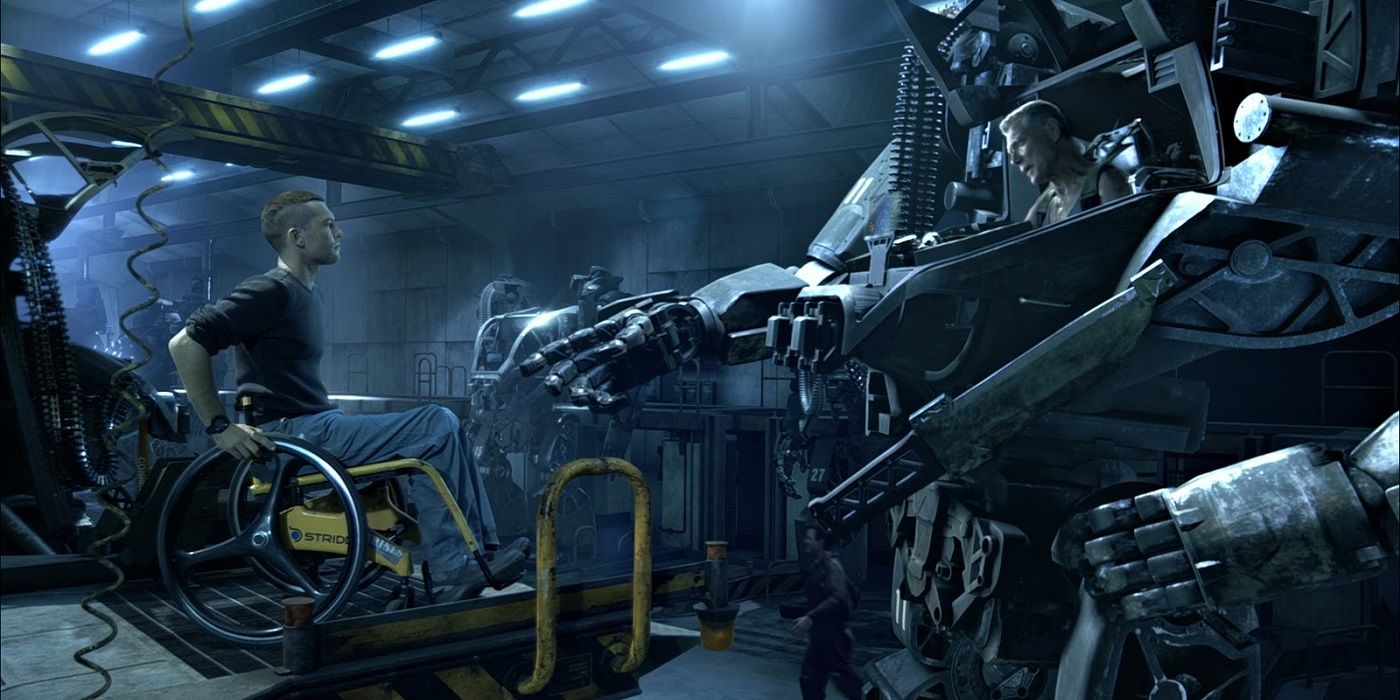While IMAX has been around as a company since the 1960s, Hollywood studios wouldn't embrace the format in a meaningful way for almost 40 years. Towering over 4 stories tall, IMAX screens allow viewers to be enveloped by the picture, with their field of vision immersed in the movie on screen. At the dawn of the new millenia, IMAX began working to digitally remaster studio pictures as consumers started turning to their theaters more and more.
Throughout the first decade of the 21st century, IMAX would aggressively work with exhibitor to begin installing their proprietary digital format as many were already retrofitting for the coming digital and 3D revolutions. While IMAX and the studios that release in the format haven't been known for too many revival screenings, here's hoping that the company recognizes the films they've released deserve to be seen as often as possible in the best format possible. With that in mind, here are the 15 Movies You Should Watch In IMAX.
15. Wizard of Oz
The 1939 classic film The Wizard of Oz changed how the world would view movies. While it may have had a storied production, the film was one of the first to use the Technicolor process along with Gone with the Wind. Being transported from the greys of Kansas to the vibrant land of Oz on the silver screen was a transformative experience for millions of viewers. The film premiered at the famous Grauman's Chinese Theater, and has the distinction of being the only movie to open there twice.
To celebrate the theater’s reopening as an IMAX screen and The Wizard of Oz’s upcoming 75th anniversary, Warner Brothers and IMAX digitally remastered the film and post-converted it into 3D. From the Yellow Brick Road and Munchkinland to the Wicked Witch’s flying monkeys and the Haunted Forest, every element of the movie looks superb in the restoration. We know there’s no place like home, but there’s also no place like the theater to see those sparkling ruby slippers on a massive screen.
14. Sucker Punch
Controversial as he may be, Zack Snyder has a style all his own that looks absolutely stunning in IMAX. From his breakout hits Dawn of the Dead & 300 to his efforts adapting the DC universe and Watchmen, Snyder fills his movies with imaginative set pieces and lush visuals. His first attempt at creating an original film, Suckerpunch was a polarizing experience for many at the time, with audience members calling it visually stunning, but confusing in its subject matter. The film follows a teen girl as she is placed in a mental institution by her abusive stepfather. Mentally taking herself to other places due to violations by the staff, Sweetpea imagines the patients in pitched futuristic and steampunk battles.
While the film is often debated for its depiction of the women’s circumstance, sci-fi author Robert Bloch’s short “The Plot is the Thing” tells a similar tale of a woman’s who is forced to live out the horror of being the female victim in every film she’s ever watched after receiving a lobotomy. In retrospect, seeing the girls forced to live out the fantasy of teen boys as her friends die around her could be read as the moments before her own lobotomy takes effect; remembering her life through the broken psyche of her mind. Perspective can make even an average movie miraculous, and the IMAX perspective is how this controversial film should be taken in.
13. Tron: Legacy
Since it’s debut in 1981, Tron had built a devoted fan base. The movie is credited with inspiring a generation of CGI artists, sci-fi enthusiasts and future tech luminaries. In 2005, the demand for a sequel finally made Disney move forward with a follow up. Joseph Kosinski’s vision for Tron: Legacy hit screens in 2010 and for those wanting a true grid experience, IMAX was the format of choice to see the 3D film.
When Kevin Flynn’s son Sam goes looking for his long lost father he is transported into the digital world of The Grid that his father had discovered almost 30 years before. Legacy shot all of the action in The Grid using 3D cameras and had several sequences that utilized the entire IMAX screen ratio. Whether it’s the disc arena, the impressive light cycle battle or the final digital dogfight, every element of Tron: Legacy is designed to be experienced in a large format theater, not your laptop.
12. Mission Impossible: Ghost Protocol
The cinematic adventures of IMF agent Ethan Hunt have been rousing audiences since Tom Cruise brought the Mission Impossible franchise back to movie screens in 1996. From the first film’s claustrophobic anxiety thriller to John Woo’s Hong Kong styled shooter, the franchise has shown a chameleon like ability to adapt to the changing cinematic tastes of its audience. When Brad Bird took over the series with its fourth entry, Ghost Protocol, he incorporated the use of IMAX cameras to film some of the most audacious stunts of the film.
Bird was a champion for the use of IMAX over 3D as he believed, especially after Nolan’s Dark Knight, it was bringing a level of showmanship back to the exhibition industry. In an extensive interview with Indiewire he said, 'When we were first looking at the image of Tom climbing the Burj, in the long shots we could not only see the traffic in the reflections when he presses down on the glass... But you actually saw the glass warp slightly because of the pressure of his hand. You would never see that in 35mm. The fact that the screen fills your vision and is super sharp seems more life-like." Here’s your mission, should you choose to accept it, see Ghost Protocol in IMAX if Paramount ever chooses to re release it. This message will not self destruct, it’s an article on the internet - not a secret spy message.
11. How to Train Your Dragon
The booming landscape of 3D films hit quite the traffic jam in 2010 as studios were ready to create content for the in-demand and profitable technology, though theaters weren’t prepared for the rush. Dreamworks was pushing the tech with their animated films like Monsters VS Aliens and Megamind, but would hit a back up in the industry with How to Train Your Dragon. Because of the amount of movies being converted into 3D affairs, Jeffery Katzenburg did everything he could to get exhibitors to feature How To Train Your Dragon 3D over rival films Alice in Wonderland and Clash of the Titans, including getting the film into 270 IMAX theaters for its opening weekend.
On the larger format, audiences are able to immerse themselves in the feeling of riding the noble and adorable Toothless as he glides through the clouds. The adventures of Hiccup and Toothless would amaze audiences with its incredible 3D flight scenes and heartfelt story about overcoming misinformation to better understand each other. We count the hours until we see the pair on IMAX screens again in How to Train Your Dragon 3.
10. Speed Racer
Filmmaking siblings Lana & Lilly Wachowski have made film after film that pushes the envelope of technology and filmmaking. While Disney’s Treasure Island may have been the first film to receive a simultaneous IMAX and theatrical release, the Wachowski’s would support the format with their Matrix sequels, and later films like Jupiter Ascending. In 2008, the pair would release their vision of the classic cartoon Speed Racer on the large format screens.
While the film would be critically lambasted when it was released, over time people have come to warm to the adventures of Speed Racer and his extended family. With fun performances and truly ground breaking post-practical visual effects, the movie is stunning on IMAX screens. The “living anime” overwhelms viewers with the amount of detail to take in, but anchors them to the story with genuine characters and solid, endearing performances from the actors. The standouts of the film though are the action oriented races featuring the Mach 5. Colorful and inventive, the movie is a blast for a family night at an IMAX cinema.
9. Godzilla
If the IMAX format was intended for the display of only one thing, it was most definitely the legendary Gojira. Pacific Rim’s release in 3D on IMAX screens could barely satiate the thirst audiences had for massive monster battles on screen. In 2014, Legendary released their second kaiju caper to feed that apetite to IMAX screens around the world. In an attempt to right the massively off course ship that was American interpretations of Godzilla, Thomas Tull partnered with Toho to bring the giant lizard back to his legacy of the horrors of nuclear proliferation.
In the film, multiple giant spider-like creatures are awakened and roaming Hawaii, Vegas and San Francisco. The military is unsure if Godzilla has been reawakened to destroy us or save us from the nuclear energy drawn creatures. When Godzilla finally arrives in SF, Ken Watanabe utters, “Let them fight.” The resulting carnage makes for one of the most fun experiences you can have in an oversized screening room. The movie establishes Godzilla as a force of nature and we can’t wait until we get more oversized action when King Kong releases later this year.
8. Gravity
Alfonso Cuaron has made a career of sleekly spectacular movies. From his break out work with a Little Princess to Harry Potter and the Prisoner of Azkaban (the first Harry Potter film released in IMAX), Cuaron’s eye for detail and use of continuous uncut shots make his films wonders to behold. After his success with his 2006 dystopian sci-fi film Children of Men, the Mexican-born director set his sights to the heavens to make the space station disaster flick Gravity.
George Clooney and Sandra Bullock paired for the first time for the movie about astronauts attempt to survive after their ride is destroyed by satellite debris. The two were originally slated to partner in Clooney’s film Out of Sight, with Bullock’s role eventually going to Jennifer Lopez. The film would win countless accolades for Cuaron, but the real winners are the audiences who got to see the film in IMAX where the it would generate almost 20% of the film’s income. While many movies have been made about our attempts to reach the stars, Gravity is the only one to drive home how truly dangerous it is just hanging out in orbit.
7. Guardians of the Galaxy
After a limited engagement in IMAX theaters for Iron Man 2, Marvel would subsequently embrace IMAX in a major way. Every MCU movie since IM2 has had at least a limited release in the large format, with Captain America: Civil War actually being partially shot with new IMAX digital cameras. The first Marvel movie to take advantage of the format during its production though would be James Gunn’s Guardians of the Galaxy.
Taking advantage of the large cinema scale, the director changed aspect ratios throughout the film including scenes like the escape from the Kyln and the final battle above Xandar. According to Gunn, “With Guardians of the Galaxy, every single frame of this film was planned from the beginning to be an IMAX film and a 3D film. I love IMAX as a filmmaker. I love IMAX as a fan. IMAX is an immersive experience. It really gives you a chance to experience much more of the movie than you would in a regular theater.”
6. Edge of Tomorrow
Tom Cruise has been no stranger to IMAX screens as is evidenced by another of his movies already being on this list, but one movie stands above the rest. No, not Top Gun; though that film was successfully re released in IMAX 3D to bring Cruise’s "need for speed" back to cinemas for a limited engagement. We’re talking about the unjustly-maligned-at-the-box-office tale Edge of Tomorrow.
Basically answering the question, "what if Groundhog Day had taken place on Normandy’s beaches during D-Day?" The alien invasion film sets Cruise and his ass kicking coach Rita Vrataski (Emily Blunt) against an army of time controlling invaders called Mimics. Though they never really mimic anything. The film launched to grand critical praise, but little in the way of box office. It didn’t help when Warner Brothers changed the film’s name before release and again after its home release. Whatever you call it, it is definitely must see IMAX entertainment.
5. Star Wars: The Force Awakens
The Star Wars franchise has been pushing the limits of film technology since 1977, so it’s no surprise that Lucasfilm was one of the first to release their films in IMAX cinemas. Premiering almost 6 months after Episode II hit traditional theaters, Attack of the Clones was released in IMAX cinemas a full 22 minutes shorter due to the limits of the 70mm projectors. Unsurprisingly, the tighter cut of the film, sans awkward Anakin and Padme romance, was lauded as being more streamlined and overall a better experience than its 35mm counterpart.
When it came time for Disney to resurrect the franchise for 2015, not only did the filmmakers behind Episode VII embrace IMAX when filming the movie, IMAX saw the perfect opportunity to launch their latest projection system. When discussing the IMAX release of the film JJ Abrams said, “I’m a huge fan of what IMAX is about,” Abrams says. “You feel it. And it ends up being that much more fun to watch. For fans of Star Wars they’ll get to experience a sequence in a way they haven’t before.” The sequence in question is the “Escape from Jakku” as it was filmed with large format cameras. During it’s release it would also benefit from IMAX Laser, an upgrade to IMAX’s digital systems. Blue hued space was a thing of the past as laser projection allowed for better color saturation and a darker black in the emptiness of the universe, making the action pop from the screen.
4. Mad Max Fury Road
There is no greater story of commitment to vision than what George Miller went through to get Mad Max: Fury Road to screen. Plagued by inclement weather, differences of opinion and a frustrating amount of compartmentalization to keep it moving, Fury Road is a testament to what can be accomplished on the silver screen. After compelling trailers were released, people were already becoming generally excited for the film, but smart audiences bought their tickets for IMAX screenings.
Capturing the epic convoy of destruction digitally, Miller’s magnum opus must be watched on the largest screen possible to truly witness the amount of detail that went into crafting the movie. The beloved film even received a special one week engagement in IMAX theaters 6 months after its initial release to garner potential Oscar talk, which would pay off in 6 wins and 10 nominations. From intricate automotive designs to chase scenes that require vast scope to contain, the movie was designed for large formats. Whether you loved the brilliant explosions or the explosive female protagonist, it’s all engrossing in IMAX.
3. Raiders of the Lost Ark
Steven Spielberg is oft considered to be the filmmaker’s filmmaker. From Jaws to ET to Saving Private Ryan, the master filmmaker has proved his work can stand the test of time in any genre. His most enduring legacy however may be in the World War II era adventures of a history professor named Henry Walton Jones Jr.
Though Raiders of the Lost Ark had been remastered multiple times for home video, it wasn’t until 2014 that Indy would finally get a proper theatrical re release, with the added benefit of IMAX improvements. In response to seeing the film’s upgrade, Spielberg would say, “When I saw the stunning quality of the picture and heard the enhanced sound in an IMAX theatre, I was quite literally blown away and hope that audiences will enjoy the experience as much as I did.” Spielberg also stated to The New York Times, “It’s a complete relief to be able to see a film that many people have just experienced on a palm-sized platform technology, suddenly hurled at them on an IMAX-sized screen.”
2. The Dark Knight
The use of IMAX cameras in major hollywood productions was fairly limited before the teen years of the 21st century. Though many films had begun going through IMAX’s DMR process to screen in the company’s theaters, no studio was actively looking to make a big budget film shot in IMAX. At the time, the IMAX cameras were huge, loud and could be incredibly distracting on set. None of this bothered Chris Nolan, who had decided to use the camera to film a full 28 minutes of his sequel to Batman Begins in the format. The director became so enamored with IMAX, all of his film’s since have been planned as IMAX releases, including Inception and the upcoming Dunkirk.
Nolan’s use of the relationship between Batman and Joker as a metaphor for the battle between order and chaos in The Dark Knight was a master work. The Jokers’ anarchy is exemplified in the IMAX shot bank robbery of the films’ opening. As the Joker is using a gang of thugs to steal millions in mob money, Nolan used smart angles and the camera’s scope to drive home the film’s scale in its opening minutes. Its’ for all of this and so much more that The Dark Knight is often looked to as not only one of the best superhero movies of all time, but also one of the best films period. And in IMAX it’s just that much better.
1. Avatar
No other director has done more for IMAX than James Cameron. The iconoclast filmmaker not only developed his on 3D camera system for the large format screens, he made two documentaries to be released in the then limited IMAX circuit; Ghosts of the Abyss, a documentary about the Titanic, and Aliens of the Deep, in which he partnered with NASA to explore the strange life at the bottom of the ocean. Even his film Titanic would see a 3D bow in the format - 15 years after its initial release.
For those not familiar with the largest grossing movie of all time, Avatar follows Jake Sully as he tries to bridge two disparate worlds on the far planet of Pandora. The incredible world Cameron built was one of the first fully realized 3D films to truly capture the potential of the technology, but it also gave the industry reason to massively invest in 3D projection systems. Throughout 2010, Avatar would see it’s theatrical run extended numerous times, including a special edition release with 9 more minutes of footage on IMAX screens. If you are sick of waiting for one of Avatar’s multitude of sequels or don’t think you’re going to be able to get to Pandora at Disney World, cross your fingers that you may get to revisit it again in IMAX sometime soon as one of the most popular IMAX movies of all time deserves all the acclaim it’s earned.

